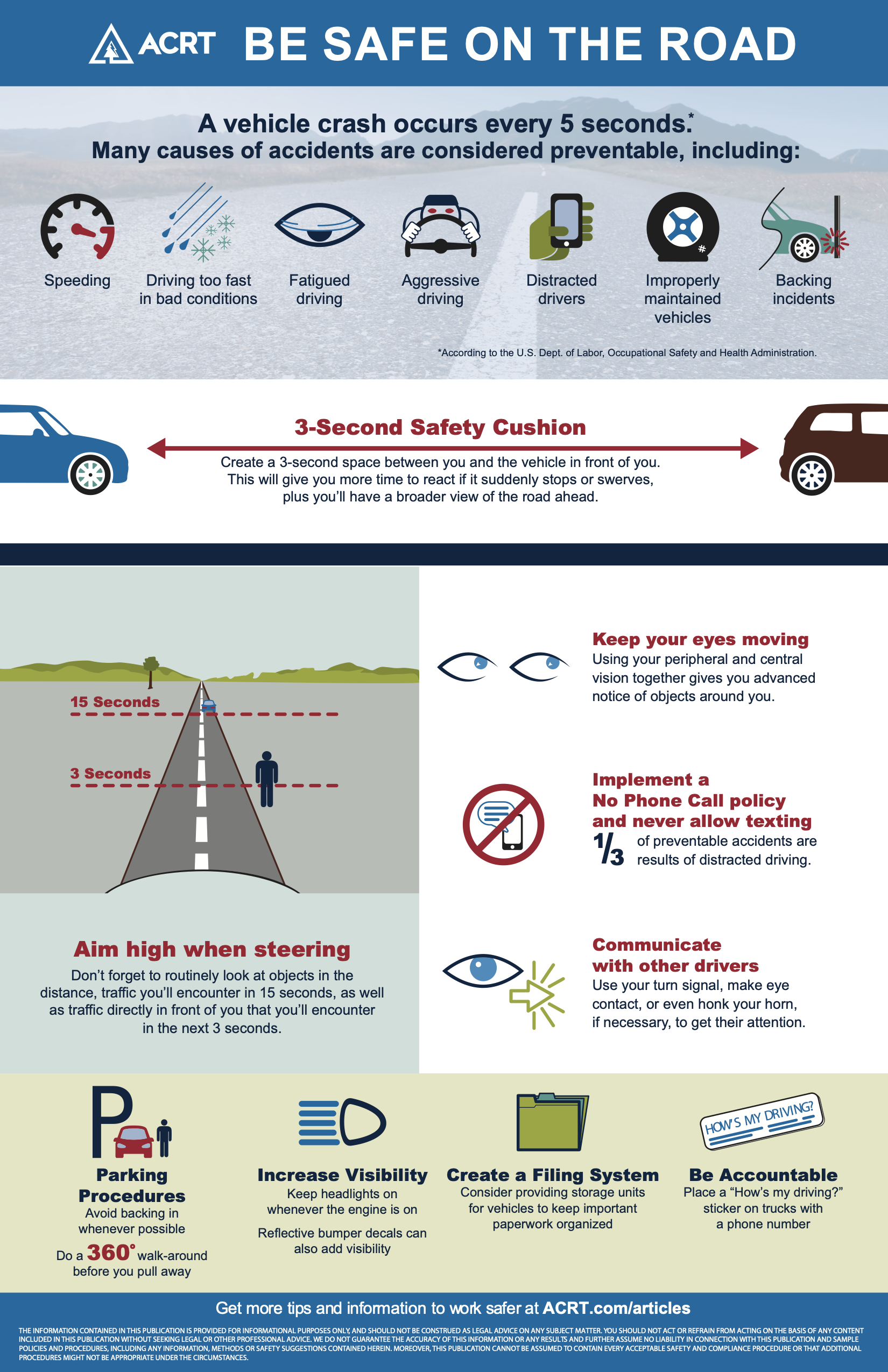Driving is a routine task that many take for granted. Yet traffic accidents are a leading cause of death and injury in the United States, with an average of about 33,000 fatalities in the last five years, according to the National Highway Traffic Safety Administration (NHTSA).
The bad news: Many of these incidents occur during the workday or on the commute to and from work. Thus, companies and utilities, especially those with large fleets, must keep this in consideration and work to protect their No. 1 asset—their employees.
The good news: Most accidents are preventable. With some simple safety measures and tips to follow, you can help ensure your team members make it home to their families each night.
![Be Safe on the Road [Infographic]](https://acrt.com/wp-content/uploads/2017/12/be-safe-on-the-road.jpg)
